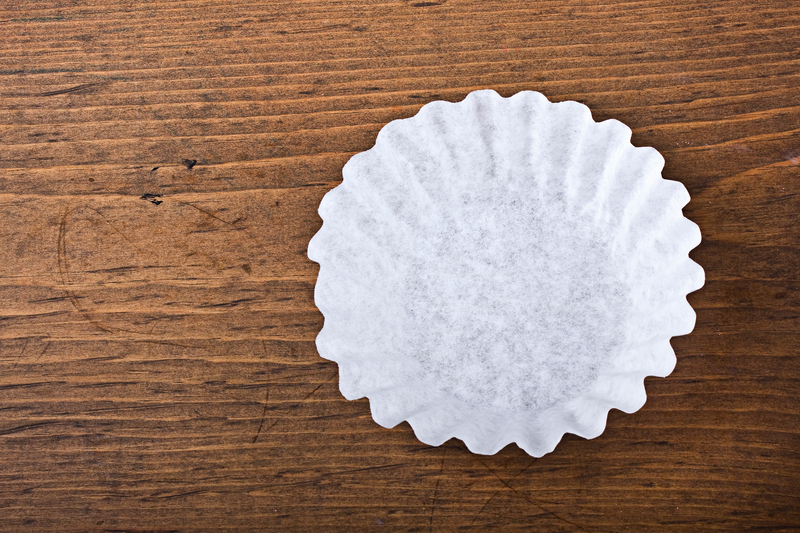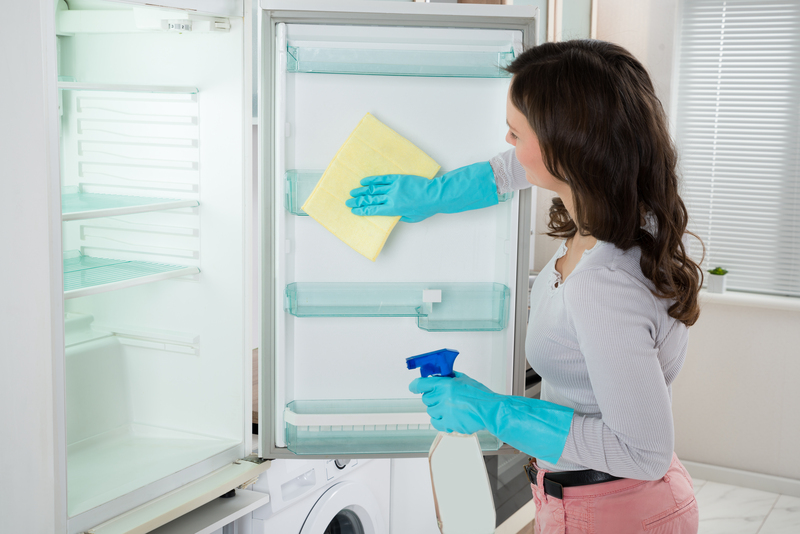Transform your living space into a dust-free, allergen-reduced sanctuary
Posted on 08/09/2025
Transform Your Living Space into a Dust-Free, Allergen-Reduced Sanctuary
Are you tired of sneezing, watery eyes, and respiratory discomfort every time you relax at home? Dust and allergens can easily invade your living space, turning your sanctuary into a source of irritation. However, it doesn't have to be this way. In this comprehensive guide, we'll show you how to transform your living space into a dust-free, allergen-reduced sanctuary with actionable steps and effective strategies. Say goodbye to allergy triggers and hello to a healthier, more comfortable home.
Understanding the Need for a Dust-Free, Allergen-Reduced Living Space
Why is it important to reduce dust and allergens in your home? Your indoor environment plays a crucial role in your health and well-being. Dust mites, pollen, pet dander, mold spores, and other allergens can worsen symptoms for those with asthma, allergies, or sensitivities. Excessive dust not only affects air quality but can also damage electronics, furniture, and fabrics.
- Improved respiratory health
- Better sleep quality
- Reduced allergic reactions
- Extended lifespan of home furnishings & electronics
- Enhanced comfort and peace of mind

Step-by-Step Guide to a Dust-Free, Allergy-Friendly Sanctuary
1. Establish a Rigorous Cleaning Routine
A regular and thorough cleaning schedule is the cornerstone of any dust-free home. Follow these tips for maximum effectiveness:
- Vacuum frequently: Use a vacuum with a High-Efficiency Particulate Air (HEPA) filter. Vacuum carpets, rugs, upholstery, and even your mattress at least once a week.
- Wet dusting: Dry dusting simply stirs up particles. Instead, use a damp microfiber cloth that traps dust without redistributing it.
- Pay special attention to places where dust accumulates--baseboards, ceiling fans, window sills, under and behind furniture, and light fixtures.
- Don't forget curtains and blinds; they are major dust magnets and should be washed or wiped regularly.
2. Declutter for Easier Cleaning
Clutter attracts dust and makes cleaning more difficult. A minimalist approach makes it simpler to maintain a dust-free sanctuary:
- Store unnecessary items in closed cabinets.
- Reduce the number of knickknacks, open shelves, and decorative fabrics.
- Keep surfaces clear for easy wiping.
- Rotate and clean displayed items monthly.
3. Choose the Right Flooring
Flooring choices can drastically impact your home's dust and allergen levels:
- Hardwood, tile, or laminate: These surfaces do not harbor dust mites and are easily cleaned.
- If you prefer carpets, choose low-pile versions and have them deep cleaned at least twice a year.
- Use washable area rugs and wash them regularly in hot water to remove dust and allergens.
4. Upgrade Your Bedding and Soft Furnishings
Beds, pillows, and soft furnishings are favorite habitats for dust mites and allergens:
- Opt for allergen-proof mattress and pillow covers that can be laundered often.
- Launder sheets, pillowcases, and blankets in hot water (at least 130?F/54?C) weekly.
- Consider synthetic fibers, which are less inviting to mites and mold than natural materials.
5. Control Indoor Humidity
Mold spores and dust mites thrive in humid environments. To maintain a truly allergen-reduced home:
- Keep humidity below 50% using dehumidifiers and air conditioning.
- Ventilate bathrooms, kitchens, and laundry rooms to reduce moisture.
- Fix leaks promptly and address condensation on windows and walls.
- Use exhaust fans when cooking or showering.
Smart Solutions for Allergen Reduction
6. Invest in High-Quality Air Purifiers
Air purifiers can make a substantial difference in removing airborne particulates, especially when equipped with a HEPA filter or activated carbon technology. Position purifiers in bedrooms and high-traffic areas for optimal results.
- Choose a purifier suitable for the room size.
- Maintain and replace filters as recommended by the manufacturer.
- For added benefits, look for purifiers that remove volatile organic compounds (VOCs) as well as particulates.
7. Ban Smoking Indoors & Minimize Scented Products
Tobacco smoke and synthetic air fresheners release harmful particles and chemicals that cling to surfaces and exacerbate allergies.
- Establish a strict no-smoking policy inside the home.
- Opt for unscented, hypoallergenic cleaning and personal care products.
- Beware of scented candles and incense, which produce soot and can trigger allergies.
8. Manage Pets for Allergen Control
Pet dander is a common allergen in many households. You don't need to say goodbye to your furry friends--just be strategic:
- Bathe and groom pets regularly, brushing them outside if possible.
- Wash pet bedding and toys often.
- Designate pet-free zones, especially bedrooms and upholstered furniture.
- Consider air purifiers with pet-specific filters in shared areas.
Transformative Home Upgrades
9. Seal Cracks and Improve Insulation
Dust often enters your living space from outside. By sealing leaks and cracks, you can effectively limit the influx of unwanted particles:
- Weather-strip doors and windows.
- Use caulk to seal gaps around pipes, vents, and where floors meet walls.
- Install door sweeps to block dust from coming under doors.
10. Replace HVAC Filters Regularly
Your home's heating, ventilation, and air conditioning system recirculates indoor air. A dirty filter can spread dust and allergens throughout the living space.
- Use high-grade HEPA or allergen-specific HVAC filters.
- Change filters at least every three months or more frequently in allergy season.
- Schedule regular HVAC maintenance for dust-free ducts and vents.
11. Opt for Washable Fabrics & Surfaces
Textiles trap dust, pollen, and pet hair. Opt for easily washable and wipeable materials:
- Choose slipcovers, curtains, and pillows with removable, machine-washable covers.
- Limit the use of heavy drapes, wall hangings, and plush throws in frequently-used rooms.
- For children's play areas, opt for washable plush toys and mats.
12. Utilize Entryway Doormats & Shoe Policies
Prevention is the best medicine. Stop dirt and pollen at the door:
- Place high-quality doormats outside and just inside every entrance.
- Establish a no-shoes policy indoors to reduce the tracking of outdoor dust and allergens.
- Provide attractive shoe storage to encourage compliance from guests and family.
Allergy-Proofing for Specific Rooms
Bedrooms
- Keep clothing stored in closets with doors closed.
- Avoid storing items under the bed, or use sealed containers.
- Limit the number of decorative pillows and plush items.
Living Room
- Opt for leather, wood, or metal furniture that is easy to wipe down.
- Minimize wall-to-wall carpeting or opt for easily cleaned area rugs.
- Choose blinds or washable drapes over heavy curtains.
Kitchen
- Store dry goods in airtight containers.
- Prevent mold by cleaning underneath sinks and appliances regularly.
- Use exhaust fans when cooking to remove particulate matter.
Bathroom
- Wash bath mats and towels regularly in hot water.
- Scrub grout and tiles to prevent mold growth.
- Keep toiletries and cleaning products stored and organized to reduce cluttered surfaces.
Maintaining Your Dust-Free, Allergen-Reduced Sanctuary
Your transformation doesn't end with a thorough cleaning or a few must-have products. Consistency is the true secret behind a living space that remains dust-free and allergy-friendly:
- Set reminders for weekly and monthly cleaning tasks.
- Stay organized with labeled containers and schedules.
- Involve all household members in regular maintenance.
- Stay vigilant for mold, leaks, and unseen clutter that can reintroduce dust or allergens.

Bonus: Natural Remedies and Alternatives
- Natural cleansers: White vinegar, baking soda, and lemon juice can be effective, non-toxic alternatives to chemical cleaning agents that may irritate sensitive individuals.
- Essential oils: Certain oils, like eucalyptus or tea tree, can help deter mites and mildew, but be mindful of sensitivities.
- Houseplants: While some plants may trap dust or emit mold spores, others, like peace lilies and snake plants, can help purify the air. Choose wisely and maintain them carefully.
Conclusion: Breathe Easy in Your Dust-Free, Allergen-Reduced Sanctuary
Creating a home that is truly dust-free and low in allergens takes mindful choices, consistent effort, and sometimes a change in household habits. The reward? Fewer allergy symptoms, improved sleep, and the peace of mind that comes with knowing your living space is a safe, healthy sanctuary. Start implementing the tips outlined above--because everyone deserves to breathe easy at home.
Ready to transform your living space into an allergen-free haven? Begin today, and feel the positive difference in every breath you take.



